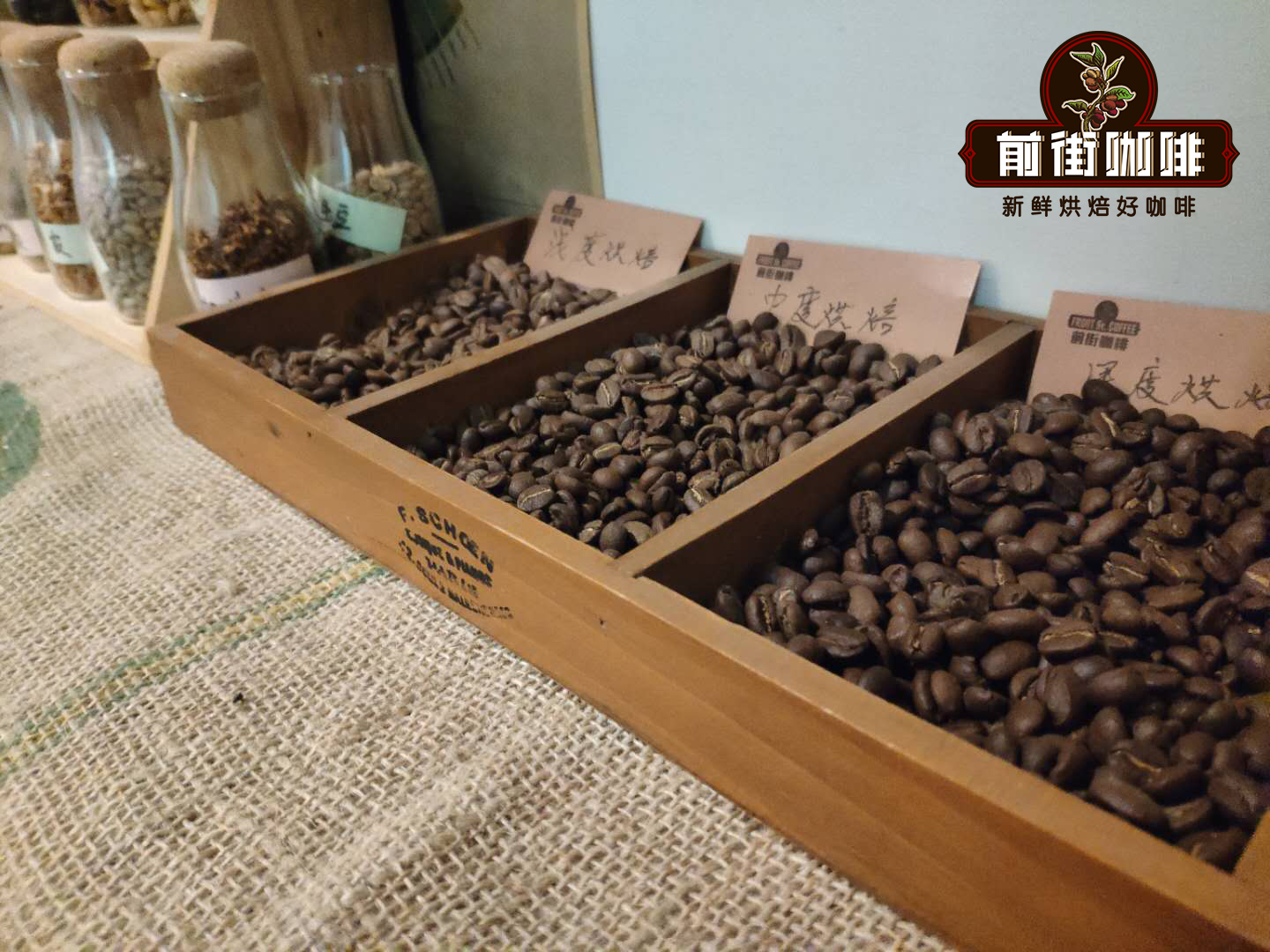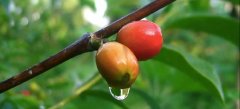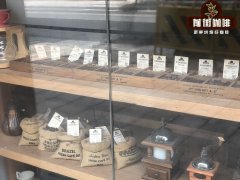Coffee utensils and grinding degree correspond to how different grinding thickness of coffee affects a cup of coffee

Under the microscope, the cells of healthy raw beans are closely arranged in lattice shape, and the precursor aromatic compounds, proteins, fats, sugars, etc., are stored in the hard cell wall. After the raw bean is roasted, the cells are destroyed and arranged loosely, but the cell wall is full of carbon dioxide, oil and aromatic flavors produced by pyrolysis, so the bean body expands, but if the whole cooked bean is not ground, it will be brewed with hot water. The volatile aroma and water-soluble flavors stored in the cell wall are not easy to release, and it is difficult to make delicious coffee.
Ripe beans must be ground and crushed to open the hard fibrous cell wall and allow hot water to enter and extract the fragrance.
The thickness should be proportional to the extraction time.
The fineness of coffee grinding will directly affect the extraction time and extraction rate. The finer the coffee is ground, the denser the powder layer is, the more coffee powder is in contact with hot water, the greater the extraction resistance is, the easier it is to prolong the extraction time and increase the extraction rate, so it is easy to over-extract. On the contrary, the coarser the coffee powder is, the larger the gap in the powder layer is, the less coffee powder particles are in contact with hot water, and the weaker the extraction resistance is, the more difficult it is to prolong the extraction time, and reduce the extraction rate, which is easy to be insufficient. Therefore, the finer the coffee is ground, it will prolong the extraction time and increase the extraction rate; the coarser the coffee powder is, it will shorten the extraction time and depress the extraction rate.
Under normal conditions, the fineness of coffee is inversely proportional to the extraction time and extraction rate. This can be proved by hand brewing and espresso. The coarser the powder, the smaller the extraction resistance, the greater the coffee flow, the shorter the extraction time, the lower the extraction rate, and the lighter the taste. On the contrary, the finer the powder is ground, the greater the extraction resistance is, the smaller the flow rate is, and the longer the extraction time is, the higher the extraction rate is and the stronger the flavor is. Deep baked beans are slightly thicker, shallow baked beans are slightly thinner.
In addition, before deciding on coffee bean grinding, coffee veterans will first look at the color and oil production of cooked beans. The lighter the roasted coffee, the more complete and hard the fiber is, the more difficult it is to extract. It is appropriate to use fine grinding, but it should not be too fine, so as not to highlight the sharp and sour taste. The deeper the roasting degree of coffee, the deeper the damage to the fiber, the easier to extract, it is appropriate to use slightly rough grinding, deep roasting grinding too fine will be bitter. Therefore, the degree of grinding of deep-roasted coffee is generally thicker than that of shallow roasted beans. The thickness can control the bitterness
Roughness is a good way to control bitterness, because the finer the grinding, the higher the extraction rate, the easier it is to extract high molecular weight bitter substances such as chlorogenic acid, quinic acid, caffeine and carbonization. On the contrary, if the grinding is too rough, the lower the extraction rate is, the more difficult it is to extract the astringent bitter substance with high molecular weight, but the sweet taste with middle molecular weight may remain in the coffee grounds because of insufficient extraction, which is a waste. Therefore, baristas should pay attention to whether the thickness of the powder is normal every day. Too thick or too fine will cause abnormal extraction and affect the flavor of coffee.
The degree of grinding of all kinds of bubble cooking methods, from coarse to fine, in the following order:
French filter kettle (rough grinding) > electric trickling filter pot (medium) > hand punch pot, siphon pot (medium) > mocha pot (medium) > espresso (fine) > Turkish coffee (very fine).
Important Notice :
前街咖啡 FrontStreet Coffee has moved to new addredd:
FrontStreet Coffee Address: 315,Donghua East Road,GuangZhou
Tel:020 38364473
- Prev

Ethiopia Yega Sheffield Hofsa Cooperative Coffee Bean washing Hovsa Coffee brewing Flavor
Professional coffee knowledge exchange more coffee bean information please follow Coffee Workshop (Wechat official account cafe_style) I believe you have also learned a lot about the famous cooperatives in Ethiopia these days, the establishment of cooperatives has indeed given many small farmers better resources to grow and sell. In Qianjie, this article continues to talk about cooperatives and the pioneers of the first wave of cooperatives in Ethiopia.
- Next

2020 Ethiopia COE#22 Sidamo Alsi Sun Iron pickup Coffee Bean Flavor
Professional coffee knowledge exchange more coffee bean information please follow the coffee workshop (Wechat official account cafe_style) Ethiopia's COE (Cup of Excellent) Excellence Cup has always been a high-profile event in the coffee circle. A total of 28 beans stood out in the 2020 Ethiopia COE Competition, with a score of more than 87 points. Among them, the three beans with a score of more than 90 are from Xida.
Related
- Beginners will see the "Coffee pull flower" guide!
- What is the difference between ice blog purified milk and ordinary milk coffee?
- Why is the Philippines the largest producer of crops in Liberia?
- For coffee extraction, should the fine powder be retained?
- How does extracted espresso fill pressed powder? How much strength does it take to press the powder?
- How to make jasmine cold extract coffee? Is the jasmine + latte good?
- Will this little toy really make the coffee taste better? How does Lily Drip affect coffee extraction?
- Will the action of slapping the filter cup also affect coffee extraction?
- What's the difference between powder-to-water ratio and powder-to-liquid ratio?
- What is the Ethiopian local species? What does it have to do with Heirloom native species?

